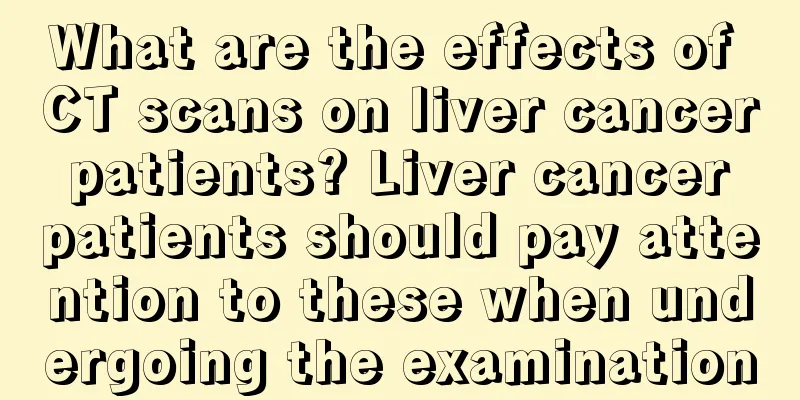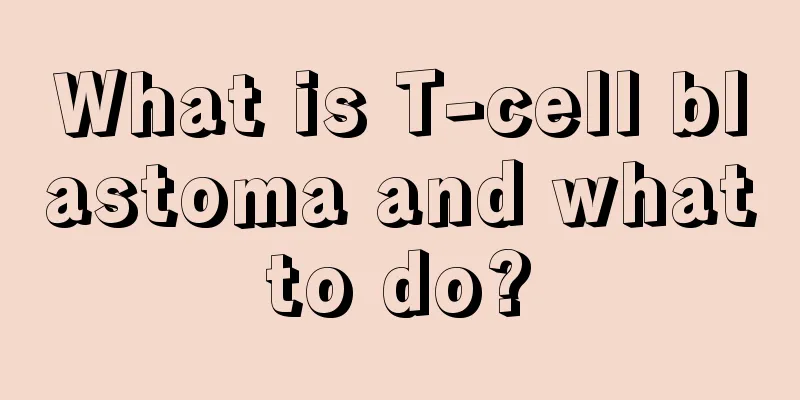What are the effects of CT scans on liver cancer patients? Liver cancer patients should pay attention to these when undergoing the examination

|
What are the effects of CT scans for liver cancer patients? Liver CT is a type of CT examination, which can assist in the treatment of liver cancer. When treating liver cancer, it is inevitable to do a liver CT scan. So, what is the specific effect of CT scans on liver cancer? Let's take a look at it together. The role of CT scan in liver cancer CT examination can clearly show the size, number, shape, location, boundary, richness of blood supply of liver cancer, and its relationship with the intrahepatic ducts. It has important diagnostic value for whether there are tumor thrombi in the portal vein, hepatic vein and inferior vena cava, whether there is metastasis in the portal and abdominal lymph nodes, and whether liver cancer has invaded adjacent tissues and organs. CT can also determine the severity of liver cirrhosis by showing the shape of the liver, the size of the spleen, and the presence or absence of ascites. Fast spiral CT can complete the scan of the entire liver in one breath-hold (about 20 seconds), which can avoid the up and down movement of the layers caused by respiratory movement and the omission of small lesions, and can also overcome the problem of artifacts caused by respiratory movement. Spiral CT can perform thin-layer scanning with a minimum layer thickness of 1mm, and the detection rate of small liver cancers of 1 to 3cm can reach 90%, and high-quality three-dimensional image reconstruction can be performed within the length of the spiral scan. For liver cancer that is difficult to make a clear diagnosis with enhanced CT, angiography CT can be further used. The contrast agent is injected into the hepatic artery through a percutaneous catheter, and the CT when the hepatic artery is developed is called CT angiography. Symptoms of liver cancer CT scan Size: It is difficult to detect lesions with a diameter of <1 cm on plain scan; Number: Most are single, but some are multi-focal; Location: Most common in the right lobe, followed by the left lobe, and less common in the caudate lobe. A few lesions are pedunculated, protruding outside the liver, and difficult to locate. Morphology: Most of them are round or oval, and they are irregular in shape when the lesions grow invasively; Boundary: Tumors with expansive growth tend to compress surrounding tissues to form a pseudocapsule, presenting a halo sign; tumors with infiltrative growth have blurred boundaries; Density: The vast majority of lesions show low density on plain scans, and changes in density are related to the degree of differentiation, size, and underlying liver lesions of the lesions. Well-differentiated lesions tend to show equal density, while large tumors tend to be necrotic and low-density; lesions may show low density when there is fatty liver; very few lesions show high density due to bleeding or calcification. Finally, let’s take a look at the precautions for doing CT scans for liver cancer. Things to note when doing CT scans for liver cancer There are many types of CT scans. Not all CT scans require fasting. They can be done on the lungs, mediastinum, chest wall, head, neck, retroperitoneum, pelvis, spine, and limbs. So whether to fast for CT scans cannot be generalized. It depends on the specific examination items. If it is the abdomen, you cannot eat. You cannot eat for blood tests, so as not to affect the accuracy of the examination. There are no special requirements for CT scans of the head and limbs; an upper abdominal CT scan requires fasting, and requires drinking about 300 ml of water before the examination to fill the stomach, and fasting can fill the gallbladder; if a full abdominal intestinal CT scan is done, not only is it necessary to fast, but also bowel preparation and drinking contrast agent before the examination. The contrast agent is mixed with 1000 ml of water, and 500 ml is drunk the night before the examination, and the remaining 500 ml is drunk around 6 am on the day of the examination; if angiography and enhanced scanning are done, because contrast agents are injected intravenously, the contrast agents may cause side effects such as vomiting, so try to fast as much as possible. However, patients undergoing coronary artery angiography can eat a small amount of liquid food, because if they do not eat, they may suffer from palpitations due to hunger, causing a faster heart rate and increased imaging artifacts. Liver CT scan is very important. |
<<: What are the symptoms of lung cancer? 5 symptoms of lung cancer are more obvious
Recommend
Slight inflammation of the lungs AIDS
In life, many people often have problems with AID...
Can hula hoop help slim waist
Can hula hoop help slim down your waist? Everyone...
What is the chance of curing prostate cancer
The cause of prostate cancer has not been fully i...
At what age can a baby drink milk without a pacifier
When babies are young, they absorb nutrition by d...
Can I eat sushi when I have a cold
Cold is a disease that we often get rid of, but m...
What are the best ways to clean intestinal stool?
Intestinal obstruction can cause great harm to th...
How to store grapes for a long time
Grapes are a fruit that is loved by both adults a...
Are there any symptoms of hyperthyroidism? What are the symptoms?
Hyperthyroidism is a disease that people are rela...
What causes hamartoma
Hamartoma is not a tumor in the true sense. So, w...
Body organs have memory! Minor problems in the 6 major organs are prone to recurrence
Some experts pointed out that when adverse extern...
What to eat for ovarian tumor
Although ovarian malignant tumor disease does not...
What should you pay attention to if you have herpes
Herpes is a common viral infection in life. The s...
What are some tips for family life
In life, mastering tips for family life will invi...
Is scar removal surgery effective?
Scar removal can now be solved through surgical t...
Autonomic dysfunction
Many people's neurosis does not occur suddenl...









